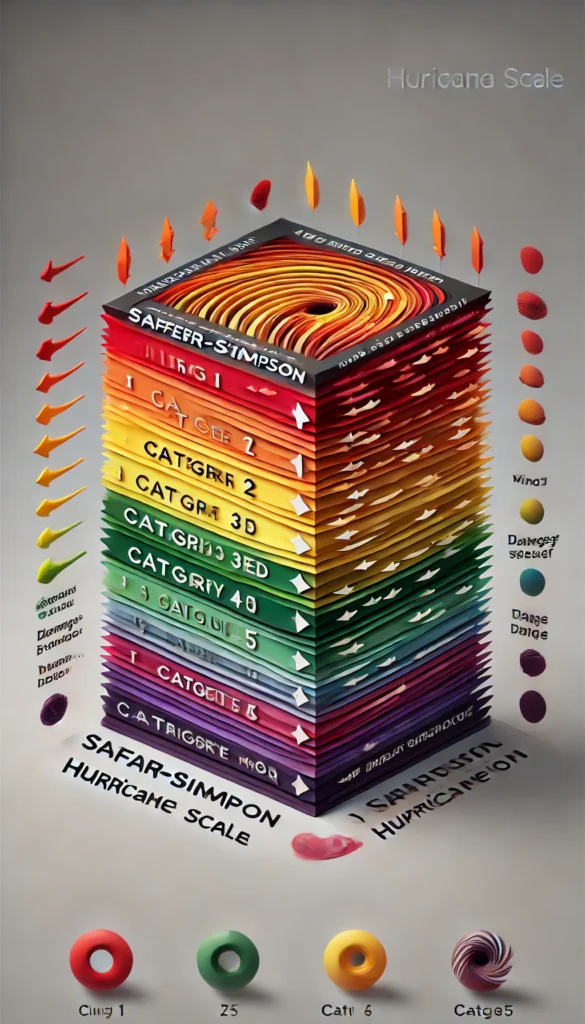How to Be Ready for a Storm or Hurricane: Essential Tips and Checklist

As hurricane season approaches, it’s crucial to be prepared well in advance. Storms, especially hurricanes, can be unpredictable and devastating, leaving you without power, access to essential services, or even the ability to leave your home. Being ready for such situations can make a significant difference in keeping your family safe and secure.
In this guide, we’ll cover the essentials you need to have on hand, the different categories of hurricanes, and considerations for specific needs like children, the elderly, and pets.
Understanding the Different Hurricane Categories
Hurricanes are classified into five categories based on the Saffir-Simpson Hurricane Wind Scale, which measures sustained wind speeds. Knowing the category of a hurricane can help you assess its potential impact and take appropriate action.
- Category 1 (74-95 mph): Minimal damage. Expect some damage to unanchored mobile homes, trees, and power lines.
- Category 2 (96-110 mph): Moderate damage. Roofs, windows, and doors can suffer damage, and power outages are likely.
- Category 3 (111-129 mph): Considered a major hurricane. Devastating damage to homes and infrastructure. Power and water may be unavailable for days or weeks.
- Category 4 (130-156 mph): Catastrophic damage. Most trees will be snapped or uprooted, and residential areas may be uninhabitable for weeks.
- Category 5 (157+ mph): Catastrophic. High risk of complete building failure, with most of the area likely to be uninhabitable for extended periods.
Even Category 1 hurricanes can be dangerous, especially when combined with flooding or storm surges, so it’s essential to take every hurricane warning seriously.
Must-Have Items for Hurricane Preparedness
Being prepared means having everything you might need on hand before a storm hits. Stocking up on these items will help ensure your family’s safety and comfort:
1. Emergency Power:
- Generator: A reliable generator can keep essential appliances, like refrigerators, medical devices, and lights, running during power outages. Ensure you have enough fuel to last several days.
- Batteries: Stock up on batteries of various sizes for flashlights, radios, and other devices.
- Power banks: Keep phones and tablets charged with portable power banks. Fully charge them before the storm. Have a car phone charger as well in case you need to charge it that way. Some cars have outlets now as well.
- Propane Tanks: Fill up your tanks in case you need to cook/heat up food.
2. Water and Food Supplies:
- Water: At least 1 gallon of water per person per day for a minimum of three days. Store extra for pets and the elderly, who may need more. You can always fill up your bathtub and lots of Tupperware with lids with water.
- Non-perishable food: Canned goods, energy bars, and dried foods are essential. Ensure you have enough for at least three days per person. Try to have paper plates and cups since you may not want to wash dishes.
- Manual can opener: Don’t forget this to open your canned foods!
3. Medical Supplies and First Aid:
- Prescription medications: Ensure you have at least a week’s supply of any required prescriptions.
- Pest Control: You may need Mosquito spray if you have standing water.
- First aid kit: Include bandages, antiseptics, pain relievers, and any specialty items like diabetic supplies or inhalers.
- Hygiene supplies: Hand sanitizers, moist towelettes, garbage bags, and toilet paper are important for maintaining hygiene when water is limited.
4. Communication and Information:
- Battery-powered or hand-crank radio: A NOAA weather radio can provide emergency updates if other communication services fail.
- Charged cell phones and backup chargers: Use apps that track the storm and alert you to evacuation routes and hazards.
- Just in Case: Have a Large Tarp in case you need to cover something like a hole in the roof. It would be handy to have a chainsaw around if your comfortable using one.
5. Shelter and Warmth:
- Blankets and clothing: Pack extra blankets, jackets, and waterproof clothing.
- Tarps and plastic sheeting: To cover roofs or broken windows in case of damage.
- Duct tape: Useful for emergency repairs or sealing doors and windows.
Special Considerations for Children, Elderly, and Pets
Children:
- Baby essentials: Diapers, formula, wipes, and baby food. Have enough to last at least a week.
- Comfort items: Toys, books, or blankets can help ease anxiety during the storm.
- Car seats and strollers: If you need to evacuate, ensure these are accessible.
- Games: If you lose power you may lose internet so you may want to be ready with other activities.
Elderly:
- Mobility aids: Walkers, wheelchairs, or canes should be easily accessible.
- Medical devices: Ensure extra batteries for devices like oxygen tanks or hearing aids.
- Special dietary needs: Stock up on food that meets specific dietary requirements.
Pets:
- Pet food and water: Have enough food and water for at least one week.
- Carrier and leashes: Ensure you have a way to safely transport your pets if you need to evacuate.
- Pet medications: Just like with humans, ensure your pets have enough of their required medications.
- Comfort items: Blankets or toys can help keep pets calm.
Evacuation Plan
If local authorities order an evacuation, have a go-bag ready with essentials. Keep these in a sturdy, easy-to-carry bag: Do NOT wait till the last minute to evacuate if you are told to leave. You do not want to get trapped in traffic and have no shelter from the storm.
- Copies of important documents (ID, insurance papers, birth certificates).
- Maps with marked evacuation routes.
- Extra cash (ATMs may be down).
- An extra set of clothes, sturdy shoes, and hygiene products.
- Contact information for family and friends.
Make sure your vehicle is fueled up and ready to go. If you have special needs family members (elderly, disabled, etc.), plan transportation ahead of time.
Tips for After the Storm
After the hurricane passes, you may still be at risk. Downed power lines, contaminated water, and damaged buildings can all pose hazards. Here’s what to do after the storm:
- Stay indoors until authorities give the all-clear.
- Avoid walking or driving through flooded areas.
- Keep away from downed power lines and report them to authorities.
- Boil or disinfect water before drinking if your area is under a boil-water advisory.


This post may contain affiliate links.
We only recommend products we would use or buy ourselves and all opinions expressed here are our own. This post may contain affiliate links that are no additional cost to you, we may earn a small commission. This helps support the channel and allow us to continue to make blogs, content and videos like you are viewing. Please do your own research before making any important decisions. You and only you are responsible for any and all digital marketing decisions you make. Thank you for joining us.
